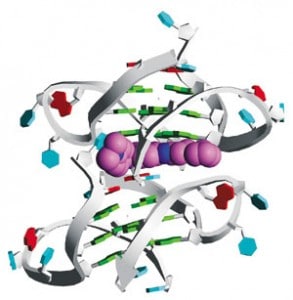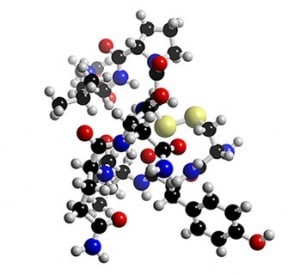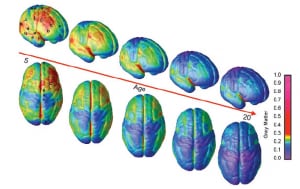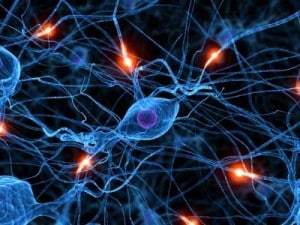
Psychopharmacology Laboratory
Our research
 |
Our experts: Existing drugs used to treat psychiatric disorders are often rather blunt instruments that can have low efficacy and cause serious side effects. We are involved in the development of novel medications for anxiety, depression and addiction. This goes all the way from in vitro screening through behavioural screening in rodents all the way to small scale human clinical trials. Current targets include brain oxytocin and vasopressin receptors (social anxiety, autism, addictions) TSPO receptors (panic, phobias) P2X7 receptors (depression) and the high affinity GHB binding site (insomnia). |
 |
Our experts: There is major interest in oxytocin as a fundamental mediator of affiliative behaviour and wellbeing in mammals. Our laboratory became interested in it as an important mechanism through which popular party drugs such as MDMA (Ecstasy) act to increase social behaviour. More recently we have developed novel drugs (e.g. synthetic oxytocin-like compound 1 (SOC-1)) working on the oxytocin receptor that increase social behaviour in rodents. We have also been examining the efficacy of oxytocin-like compounds in treating addictions. |
 |
Our experts: Our lab is conducting the first ever study of the potency of street cannabis seized by police in NSW. Other clinical trials are examining novel treatments (e.g. Lithium, Oxytocin, Sativex) to help heavy cannabis users quit the drug. We are also looking at “reintoxication” effects in humans and rats: how food deprivation, exercise and stress cause THC to come out of fat stores and into the body. Recent topics we have addressed include:
|
 |
Young people are increasingly using novel party drugs, often bought over the internet. Often the possible hazards associated with these drugs are not well characterised. We currently have projects examining the addictive and possible toxic effects of mephedrone (known as Meow-Meow), and synthetic cannabinoids. This follows on from our extensive historical work on the drugs MDMA (Ecstasy) and Methamphetamine (Ice). Ongoing projects include the following:
|
 |
The human brain undergoes major developmental changes throughout adolescence and early adulthood and this is also peak time of substance misuse and mental health difficulties. We use animal models to examine the differential effects of alcohol, recreational drugs and prescription drugs (e.g. antidepressants, ADHD meds) on adolescent versus adult brains. We also examine how acute and chronic stress during adolescence can impact adult personality and behaviour. |
 |
Alcohol related problems are estimated to cost the Australian community more than $5 billion per year. With my colleagues Michael Bowen and Michael Kendig, I have undertaken research that looks at the nature and treatment of alcohol craving. This research takes advantage of the the prodigious appetite that rats have for consuming standard off-the-shelf beers. This research has been funded by the Australian Research Council and the NHMRC. We are also involved in studies of human alcohol dependent populations in conjunction with A/Prof Adam Guastella, Dr Andrew Kemp and Dan Quintana. Recent experiments include the following:
|
 |
Laboratory rats exposed to the odour from the fur of a natural predator (cat) show a strong and prolonged anxiety response. This is despite the fact that they have never actually met a cat before! This powerful innate anxiety response to cat odour in rats may be analogous to certain human anxiety states such as phobias. We have used this as an animal model of innate fears in humans and explored the neural basis and pharmacology of this response. We also continue to search for the chemical component that gives rise to this effect. This work is being undertaken by Michael Kendig, Richard Kevin, Michael Bowen and Matthew May. Ongoing projects include:
|
 |
A major mission of the Psychopharmacology Laboratory is to educate the wider community about the effects of recreational drugs and prescription psychotropic drugs. Professor McGregor undertakes training workshops in the field of Psychopharmacology aimed at mental health professionals and gives frequent public lectures and invited educational talks about the work of the laboratory. We are particularly interested in educating young people about drugs and the brain. |
Our people
Director
- Professor Iain McGregor, MA(Oxon) PhD(Sydney)
Professor of Psychopharmacology, NHMRC Principal Research Fellow
Staff
- Thomas Arkell, Research Assistant
- Elisha Richards, Research Assistant
- Sarah Baracz, NHMRC Research Associate
- Jordyn Stuart, Research Associate
- Anastasia Suraev, Research Associate
Students
- Richard Kevin, BPsych(Hons, Sydney), PhD Student
- Selina Ahmed, PhD Student
- Callum Hicks, BSc(Hons, Sydney)
- Emily Karanges, BSc(Hons, Sydney)
- Linnet Ramos, MSc
- Craig Motbey, BSc(Hons, Sydney, PhD
- Nadine Apetz, MSc
- Dr Petra van Nieuwenhuijzen, Department of Pharmacy, University of Sydney
- Dr Jonathon Arnold, Department of Pharmacology and BMRI, University of Sydney
- Dr Michael Bowen, School of Psychology, University of Sydney
- Dr Patricia Bryant, Roads and Traffic Authority, Sydney
- Dr Kelly Clemens, Department of Psychology, Macquarie University
- Dr Jennifer Cornish, Department of Psychology, Macquarie University
- Dr Robert Dielenberg, School of Biomedical Sciences, University of Newcastle
- Dr Jason Gallate, Centre for the Mind, University of Sydney
- Dr Garth Hargreaves, medical student, Notre Dame University
- Dr Andrew Hayes, School of Biological Sciences, University of Queensland
- Dr Ljiljana Sokolic, Department of Psychology, University of Sydney
- Dr Paul Mallet, Department of Psychology, Wilfrid Laurier University
- Dr Kirsten Morley, Central Clinical School of Medicine, University of Sydney
- Dr Lauren Staples, Department of Psychology, Macquarie University
- Dr Murray Thompson, medical student, University of Sydney
Collaborating labs and colleagues
- Dr Michael Bowen, School of Psychology, University of Sydney
- Dr Glenn Hunt, School of Psychological Medicine, University of Sydney
- Dr Kong Li, Department of Pharmacology, University of Sydney
- Prof Izuru Matsumoto, Department of Pathology, University of Sydney
- Dr Andrew Lawrence, Howard Florey Institute, Melbourne
- Dr Arjan Blokland, Department of Psychology, University of Maastricht, The Netherlands
- Dr Leonora Long, Garvan Institute, Sydney
- Paul Callaghan, Australian Nuclear Science and Technology Organisation (ANSTO), Sydney
- Clinical Prof Michael Kassiou, Brain and Mind Research Institute (BMRI), University of Sydney
- Prof Nikolaus Sucher, Centre for Complementary Medicine, University of Western Sydney
- Prof Nick Lintzeris, Langton Centre, Sydney
- Prof Jan Copeland, National Cannabis Prevention and Information Centre (NCPIC), UNSW
- Prof Inga Neumann, University of Regensburg, Germany
- Prof Rainer Landgraf, Max Planck Institute of Psychiatry, Germany
- Dr Tim Karl, NeuRA, Sydney
- Prof Mary Collins, Department of Pharmacy, University of Sydney
- Associate Prof Adam Guastella, University of Sydney